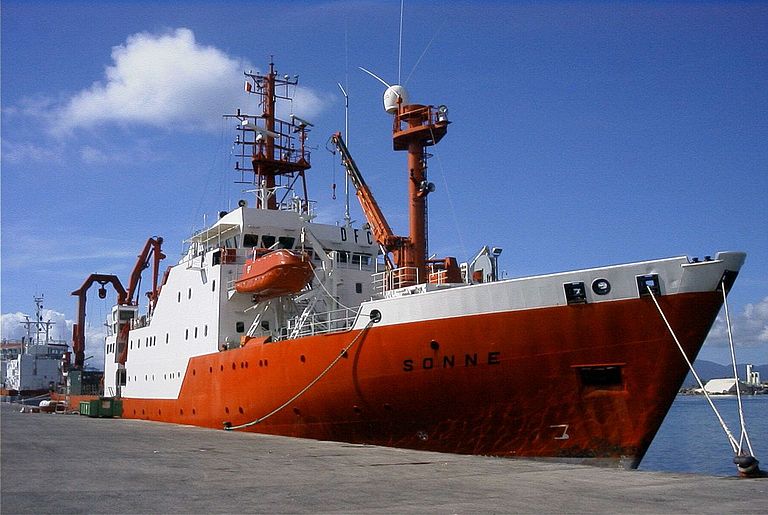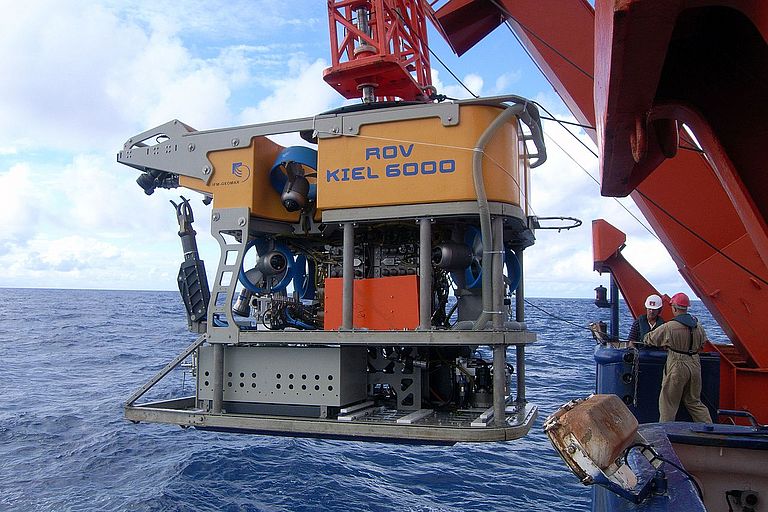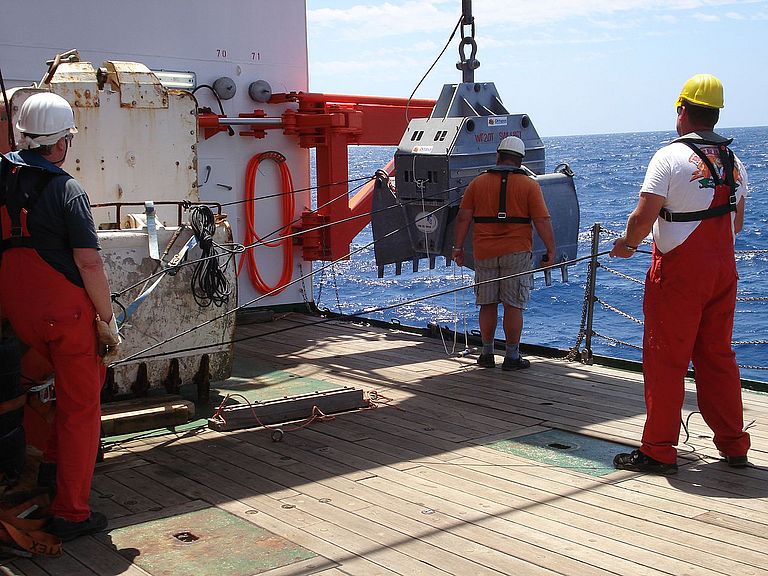Search for Evidence between the Andes Mountains and Deep-sea Trenches
September 20, 2010/Kiel, Germany. From the 23rd of September to the 1st of November, 27 scientists will investigate the Chilean margin in the eastern Pacific with the German research vessel SONNE. The aim is to understand the role and fate of volatiles and fluids in subduction zones and their impact on natural hazards, such as earthquakes, volcanic eruptions and tsunamis. The expedition SO-210 is part of the Collaborative Research Centre (SFB 574) “Volatiles and Fluids in Subduction Zones”. The researchers will use a suite of large-scale instruments, like the remotely operated vehicle ROV Kiel 6000. Dr. Peter Linke, a Marine Biologist of the Leibniz Institute of Marine Sciences (IFM-GEOMAR) will be head of the expedition.
The signature was just placed on the proposal for the expedition SO-210, when one of the strongest earthquakes of the 50 years jolted Chile in February 2010. The earth eruptions triggered a giant tsunami, which reached several Chilean ports in just minutes and which even affected Alaska. “The risk of such events is very high in this region, specialists had already expected it,” explains Dr. Peter Linke from the Leibniz Institute of Marine Sciences (IFM-GEOMAR) in Kiel. The earthquake originated from the very active subduction zone off the Chilean coast, where the Nazca plate is pushed under the South American plate.
Here, the ocean floor is lanced by deep trenches and basins. In contrast on the continent, high mountains and volcanoes are being folded up until today and then the ground is vibrating. Therefore, researchers already picked the Chilean Coast as the target for the last expedition two years ago. The expedition is part of the Collaborative Research Centre (SFB 574) “Volatiles and Fluids in Subduction Zones - Climate Feedback and Trigger Mechanisms for Natural Disasters”. While making their cruise plans, the researchers would have never guessed, that reality will catch up with them. “The earthquake showed, that our work in this field is a sad up-to-date topic”, says Linke.
From the 23rd of September to the 1st of November the international team of researchers will work between the harbour city Valparaiso and the island Mocha. With a variety of large-scale equipment like a video-controlled grab, a piston corer, a multi-corer system and the remotely operated vehicle ROV Kiel 6000 the scientists will take samples in water depths up to 6000 meters. One of the goals of the cruise is to find carbonates and to use them as a geochemical archive of cold seep activity. Actual cold seep activities will be monitored in the water column as well as on the sea floor. Simultaneously, a video operated “Lander system” will perform experiments and long-term observations at the ocean floor. In addition, investigations around the seep activities will be conducted to gain more insight into the marine ecosystems around the subduction zones.
“The technological outlay is extremely high,” says the head of the cruise Linke. „Our equipment fills twelve containers.“ Nevertheless, it is only possible to accomplish the goals of this cruise with such extensive equipment. We want to investigate and quantify the dewatering processes in the fore arc of the central Chilean subduction zone, in particular the origin and output flux of vent fluids and volatiles”, summarizes Linke. “Therefore we investigate composition of various substances in the sediments, their origin and distribution - for example whether substances are emitted directly in the water column or by volcanic eruptions, so that they ooze via the Andes Mountains in the atmosphere to be brought back as ashes into the marine cycle. Through high resolution mapping and well defined sampling at the continental slope, we are able to calculate, whether there is the danger of land slides- which can also be a cause for tsunamis.” Besides that, the investigations should show the researchers, how much climate- relevant components like carbon dioxide, methane, sulphur and halogens are seeding. Moreover, long sediment cores should provide information about volcanic eruptions in the past and their ash emissions.
“We are optimistic to find some hints from the earthquake in February. The sea floor might have changed due to the earthquake as well as the output flux of vent fluids and volatiles“, prognoses Linke. Comparisons with records from other cruises allow further conclusions about tectonically processes in the region. The scientists will present their first results at an international workshop of the Collaborative Research Centre in the Chilean Pucón, directly following the expedition. “We hope that we can contribute to the further understanding of the subduction zone mechanisms”, says Linke
Background Information:
The Collaborative Research Centre (SFB 574) “Volatiles and Fluids in Subduction Zones - Climate Feedback and Trigger Mechanisms for Natural Disasters“ was founded in 2001 at the Christian-Albrechts University in Kiel and the IFM-GEOMAR. Its goal is to investigate and quantify the processes of subduction zones, in order to develop better risk-evaluations for the climate. The German Research Foundation (DFG) supports the SFB 574 and it is final phase from 2008 to 2012.
Contact
Jan Steffen (Communication & Media), Phone: +49-431 600-2811, presse@geomar.de





